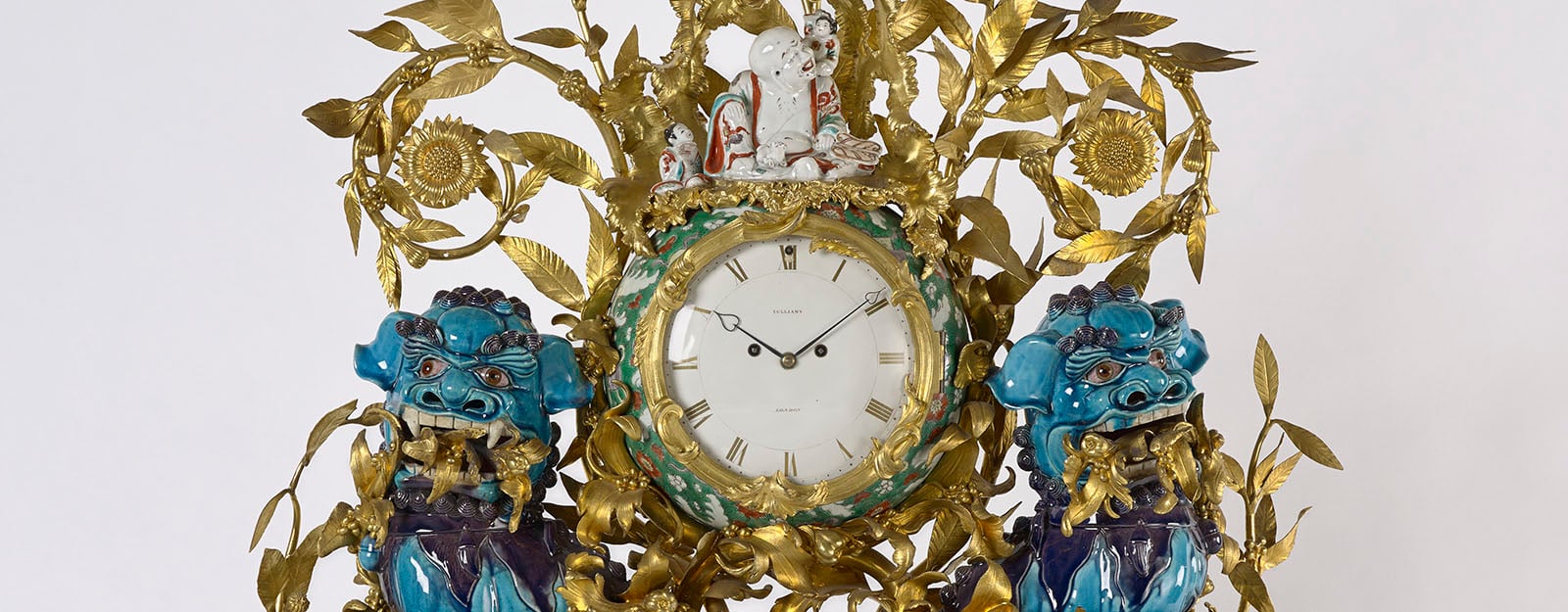
A Prince's Treasure
120 objects from the Royal Collection return to the Royal Pavilion in Brighton
Pair of vases with mounts
vases: 1700-50, mounts: late eighteenth centuryPorcelain with moulded decoration and turquoise glaze with gilt bronze | 31 x 20.5 x 13 cm (whole object) | RCIN 478
A pair of Chinese porcelain vases with French gilt-bronze mounts. Baluster-shaped, the tapering sides moulded all over with scale pattern, a large-petalled, cup-shaped mouth rising from the shoulder, with the biting heads of a pair of slender serpents forming loop handles, their bodies encircling the sides to end in forked tails near the spreading foot. The mouth rim with a gilt-bronze, arched, fluted band, with a redundant ring loop underneath (at either side), perhaps originally to attach a cover, on a broad, stepped, gilt-bronze base cast with ribbon-twist and acanthus-leaf bands.
A pair of almost identical vases of the same size, with gilt-bronze collars, were included in Claude-Pierre-Maximilien de Radix de Sainte-Foy’s sale (Paris, 22 April 1782, lot 84). The vases were illustrated as marginalia by Charles Germain de Saint-Aubin in a copy of the sale catalogue sold at Christie’s Paris, 2 April 2016, lot 46.
Turquoise glazes, Islamic in origin, are found in Chinese pottery from the Song period (960–1279) onwards. Used later on porcelain, they were, as a rule, applied to a biscuit fired body and baked at medium temperatures. These wares were especially admired in France in the eighteenth century when the glaze was known as bleu celeste, and were favoured by Queen Marie Antoinette.
Text adapted from Chinese and Japanese Works of Art in the Collection of Her Majesty The Queen, Volume II.







